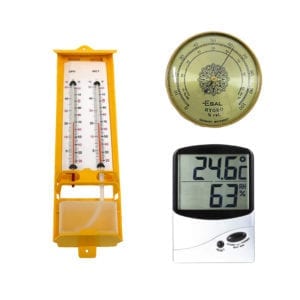In this article, while introducing hygrometers briefly, we will also talk about the types of hygrometers. Various types of hygrometers measure the amount of moisture vapor in the air, soil, or confined spaces. Instruments for measuring humidity usually rely on measurements of another quantity, such as temperature, pressure, mass, or mechanical or electrical changes in a substance when moisture is absorbed. These measured quantities can be used to determine humidity through calibration and calculation. Modern electronic devices measure humidity differences by measuring the temperature of condensation (called the dew point) or changes in electrical capacitance or resistance.
At Linquip, you’ll find everything you need to know about hygrometers. Our experts are here to assist you if you need help with a hygrometer. Explore Linquip’s article “What Is a Hygrometer?” for a basic understanding of these devices.
Have you ever used one? Discover the hygrometer you need from Linquip’s selection of Hygrometer Products. Is there a particular type of hygrometer you require? Linquip offers no-cost access to all available Hygrometer Devices for Sale. Using Linquip, you can also submit an inquiry/request for quotes to all Hygrometer Suppliers and Companies for free if you are looking for hygrometer prices.
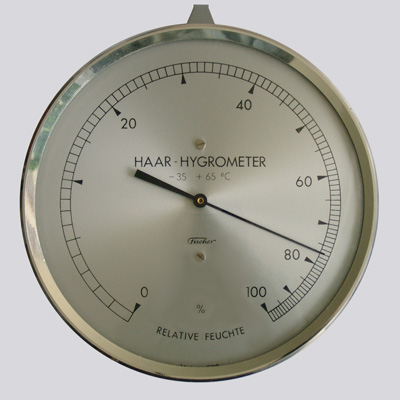
Hygrometers can be categorized into the following types:
- Hair-tension hygrometers
- Humidity cards
- Metal-paper coil hygrometers
- Mechanical hygrometers
- Psychrometers
- Gravimetric hygrometers
- Manual hygrometers
- Electrical hygrometers
- Hygrothermographs
- Research hygrometers
- Chilled mirror hygrometers
Basics of Hygrometers
We will start by going over some basic hygrometer information and then expand on the types of hygrometers.
What Is a Hygrometer Used for?
The hygrometers are valuable devices that calculate and calibrate changes in pressure and temperature. When these factors are added together, the resulting percentage will be moisture in the air. A hygrometer is a helpful device for offices, homes, and manufacturing and industrial processes. These areas require ensuring that no change in humidity will occur since it may affect the production of materials.
Some experts believe that every conceivable product is directly affected by humidity or performs differently at certain relative humidity levels, which is why hygrometers are valuable tools for measuring ambient air moisture. The amount of humidity in the environment and industrial processes affect the performance of materials. The hygrometer inevitably, however, deals with the factors affecting the conditions of the space. Contamination, degradation, and calibration issues arise, so effective measurement requires various hygrometers and calibration processes to get specific results.
Hygrometers are utilized in a myriad of environments, such as homes, offices, factories, hospitals, research labs, drying processes, food production facilities, incubators, greenhouses, and museums, as well as textile and paper industries.
Some of the major challenges that hygrometers help to solve are:
- Small changes in humidity levels can have significant effects on industrial processes.
- To get accurate readings, sensors need to control or contain variables such as pressure, temperature, and the environment or materials being measured.
- Monitoring moisture levels and occasionally adjusting humidity are important in every manufacturing process.
- The effects of humidity can be seen in their simplest form when bread and cakes spoil due to moisture.
- Excess moisture in a room can be measured with a simple hygrometer to see if bacteria or mold are growing or if allergies are being exacerbated.
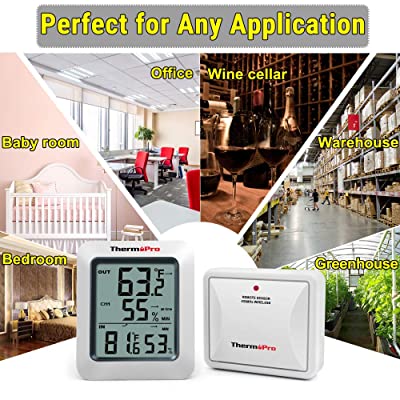
Working Principle of a Hygrometer
It must be known how to read a hygrometer, regardless of whether someone will utilize it for weather observation or measure indoor conditions. These instruments need to be calibrated at least once a year to achieve the best results.
There are several types of hygrometers available today, and how each work depends on its design. An example is a capacitive hygrometer. These devices utilize a variety of sensors. Capacitive hygrometers are made for applications where the price, fragility, or space of the device is a concern, so they sacrifice the accuracy of the device for its affordability.
Capacitive hygrometers measure the moisture content of a metal oxide material. They are often used to measure the effect of humidity on a polymer’s dielectric constant (or relative permittivity), such as synthetic plastics. When calibrated, the sensors hold an accuracy rating of ±2% relative humidity within the range of 5 to 95% relative humidity.
Without calibration, accuracy is up to three times worse. Even so, the sensors can withstand high temperatures and the effects of condensation, making them suitable for various applications. Capacity hygrometers, however, have sensors that are easily contaminated and show signs of aging very quickly.
Another type of sensor is resistive, which is less sensitive than capacitive sensors. These sensors measure the changes in a material’s electrical resistance which humidity in the environment causes. Since resistive sensors are less sensitive than capacitive ones, they require a more complex circuit board. Depending on the resistive material, accuracy can be up to 3% relative humidity. A hygrometer material also determines its resistance to condensation.
How to Utilize a Hygrometer: Reading the Device
It is not difficult to read a hygrometer, but the methods may vary depending on the type and model. For example, a wet and dry bulb requires the following numbers:
- Dry bulb temperature;
- The temperature of the wet bulb;
- Wet bulb depression (the difference between the first and second temperatures).
Look at the chart on the face of the device and begin reading from the depression of the wet bulb down to the temperature of the dry bulb. Take the point where the two numbers meet, and you will get the relative humidity of the area. Calculate the final answer utilizing percentages.
The digital hygrometers do not need to be placed more than one meter (3.3 feet) above the ground. At least three minutes will be needed for the temperature sensor to accurately detect the air. The instrument will perform all other calculations for the user.
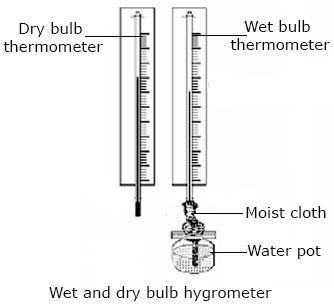
Types of Hygrometers
Ancient China developed prototype hygrometers to study the weather during the Shang dynasty. The Chinese used charcoal and a lump of earth: the dry weight of the charcoal and a lump of earth was compared to their damp weight after exposure to the air. Based on the differences in weight, the humidity level was calculated.
Some methods used mass to measure humidity, such as when the air was dry, the bar of charcoal would be light, while when it was humid, the bar of charcoal would be heavy. A hygrometer was made by hanging a lump of earth and a bar of charcoal on the ends of the staff separately, then fixing a lifting string on the central point so that the staff was horizontal in dry air.
In 1480, Leonardo da Vinci invented the first crude hygrometer. Francesco Folli created a more practical version of the device during the 1600s, while Robert Hooke improved several meteorological instruments including the hygrometer.

Johann Heinrich Lambert, a Swiss polymath, presented a more modern version in 1755. Further, in 1783, Swiss physicist and geologist Horace Bénédict de Saussure invented the first hygrometer that measured humidity utilizing human hair.
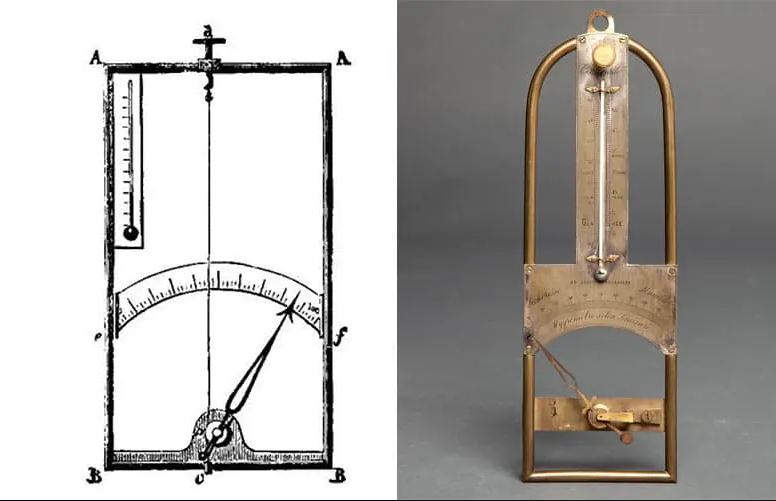
Hair-Tension Hygrometers
Displacement sensors utilize hair, cellulose, or nylon to measure expansion and contraction due to humidity. Hygrometers with fibers that connect with dials and cause needles or gauges to move as they expand or contract are relatively inexpensive and resistant to contamination. These general humidity meters can be used in homes, instrument cases, greenhouses, basements, attics, and terrariums.
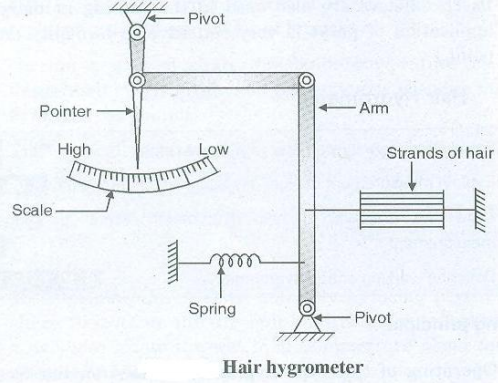
Humidity Cards
The easiest method of measuring moisture is with humidity cards. These cards are designed to indicate the humidity range by changing colors to indicate whether the humidity is less than the range, within it, or more than the top margin. Cobalt chlorine solutions and various additives are utilized to cover a wide range of moisture conditions. Some cards have multiple spots to accommodate different humidity levels. These cards help measure humidity in containers and packaging when observed through transparent windows. A relative humidity card can measure from 5 percent to 95 percent.
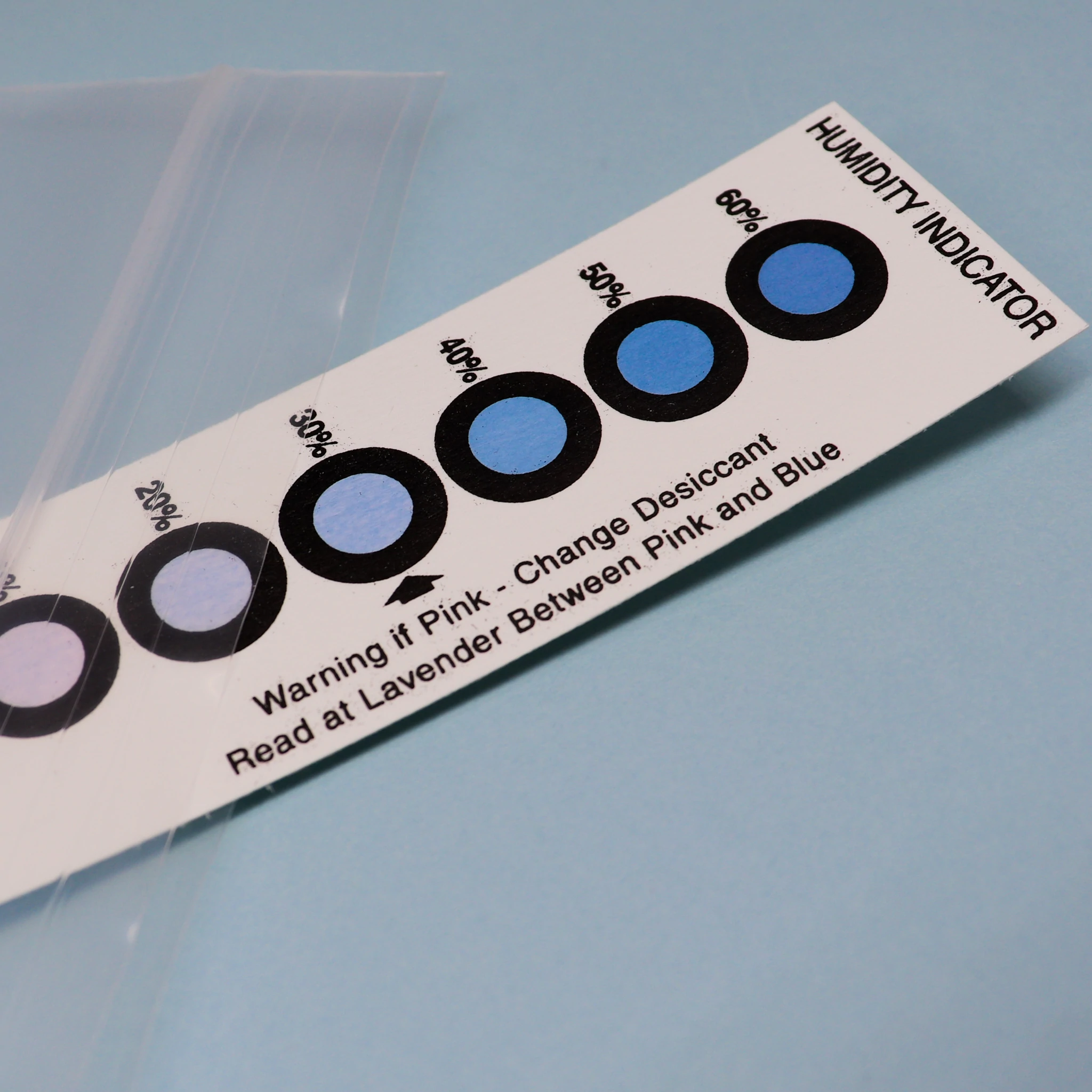
Metal-Paper Coil Hygrometers
In areas where absolute accuracy is not necessary, such devices are often utilized for inexpensive moisture monitoring. The paper is attached to a metal coil with salt and changes shape after absorbing moisture or losing moisture, which moves a needle or dial. These hygrometers can easily detect changes in humidity, but they are not 100% accurate.
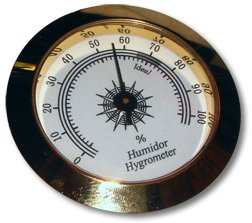
Mechanical Hygrometers
Mechanical hygrometers are simple wall-mounted devices, clocks, watches like instruments, or elegant brass meters that measure humidity with high precision. Since these analog instruments have provided reliable readings for hundreds of years, it is necessary to test and calibrate them periodically to ensure they remain accurate.
For testing a mechanical hydrometer, compare a reading from the outdoors with local forecasts, place the instrument in a sealed container, ensure it is 95 percent or higher after a few hours, or utilize a sling psychrometer. Turning a screw calibrates most mechanical hygrometers.
The healthiest indoor environments are those with relative humidity levels between 40 and 60 percent. For indoor and outdoor measurements or to ensure humidity in controlled environments, mechanical hygrometers are utilized. Humidity is measured with a hygrometer that has a 1 to 3 percent error margin, and the most accurate models are costly.
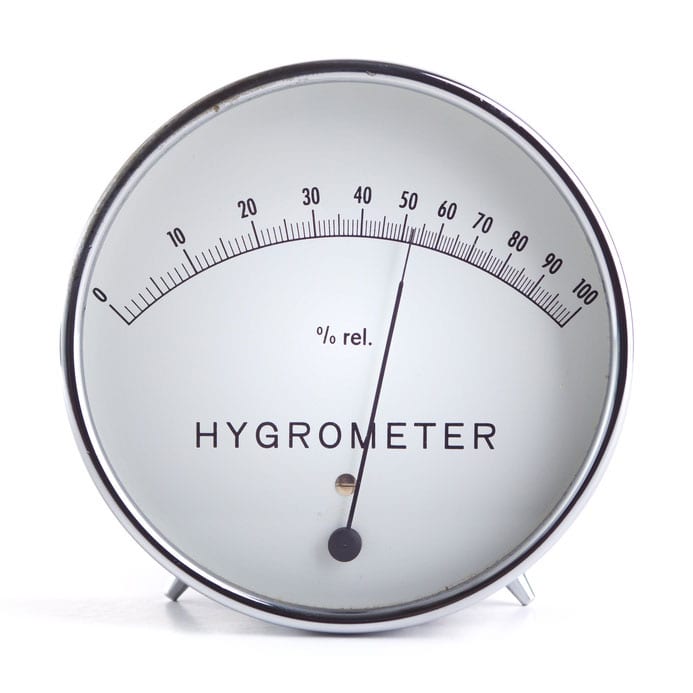
Psychrometers
Psychrometers, including matched pairs of thermometers, have a dry bulb while the other is wet. This device measures relative humidity based on evaporation cooling the wet bulb by comparing the differences in temperatures between the wet and dry bulbs. This model is not applicable in temperatures below freezing because the moisture freezes, and this specialized hygrometer does not measure precisely below 20 percent relative humidity.
Sling psychrometers are typically used in large areas as they introduce moisture into small, enclosed spaces. Sling psychrometers whirl about large areas to sample ambient air while aspirating psychrometers are compact, mechanized units that can be carried to many areas. Psychrometers are excellent for measuring outdoor humidity and moisture in museums where dry storage conditions are necessary to preserve exhibitions.
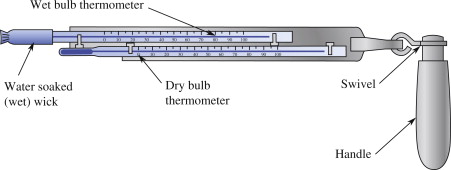
Gravimetric Hygrometers
Gravimetric hygrometers measure air moisture by comparing it to an equal control volume of dry air. Gravimetric hygrometers are highly accurate and expensive, and they are used to set standards throughout the United States, United Kingdom, European Union, and Japan. Utilizing these devices is challenging, so they are typically reserved for calibrating less accurate hygrometers.
Manual Hygrometers
Manual hygrometers are used for thousands of applications, including personal, industrial, scientific, and non-exact fieldwork. Portable instruments are affordable, user-friendly, and safe when calibrated regularly. Other kinds of manual hygrometers contain wall hygrometers, models for instrument cases, moisture analyzers for humidors, and home-use models to prevent mold, chapped skin, breathing difficulties, and problems with electrical equipment.
Electrical Hygrometers
Measurements of electrical hygrometers are based on changes in resistance or capacitance. Probes usually contain a sensor to measure changes in an on-chip layer of lithium chloride or another semiconductor. In the most accurate electrical hygrometer, a quantity of gas is passed over a moisture-absorbing material. The amount of moisture absorbed is determined by weighing the gas before and after the process.
Electrical hygrometers work by absorbing or adsorbing water. Capacitive hygrometers measure condensation to determine how it affects how much current a material can hold. Resistive hygrometers absorb water to determine electrical resistance. Capacitive sensors can confront condensation, but resistive sensors cannot, and both types of hygrometers are unprotected from contaminants.
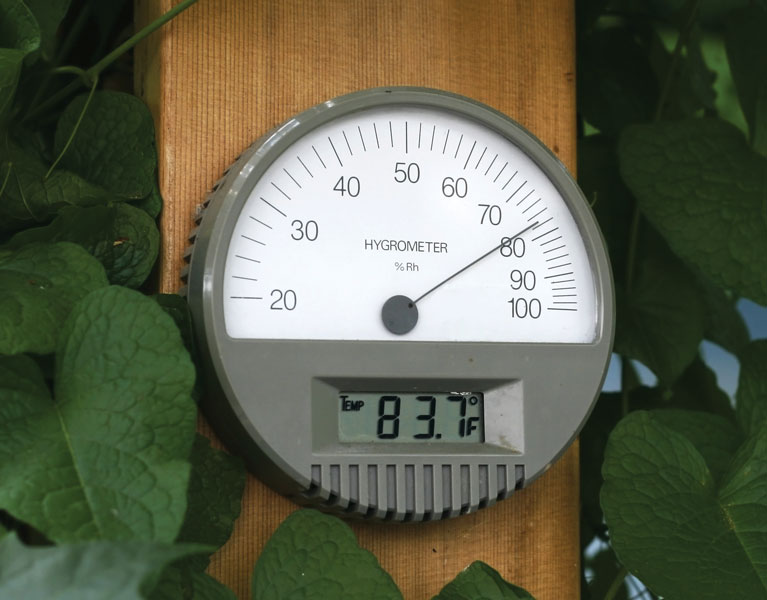
Hygrothermographs
The National Park Service uses hygrothermographs to monitor museum exhibitions and storage areas by measuring and recording humidity and temperature data. The hygrothermograph measures humidity and temperatures with bimetal temperature sensors and hygroscopic humidity sensors. These tools require frequent calibration.
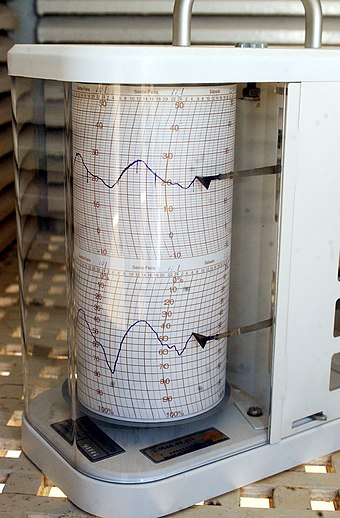
Research Hygrometers
The research hygrometers contain portable handheld models, chilled mirror hygrometers, and advanced humidity control systems based on frost-point moisture analysis. For taking low-pressure samples, it is possible to choose from chemical, electronic, mechanical, and digital tools as well as models with built-in vacuum pumps.
A variety of specialty hygrometers can ensure accurate measurements that are reliable, stable, and repeatable, critical qualities in scientific research. In aircraft, submarines, simulation equipment, and pressure suits, hygrometers guarantee uninterrupted air supplies, and they can also analyze air samples accurately and increase safety. When even trace amounts of moisture enter processing equipment, this can compromise the effects of a process. However, advanced hygrometers and complementary processing equipment can decrease risks, increase effectiveness, and analyze critical intelligence.
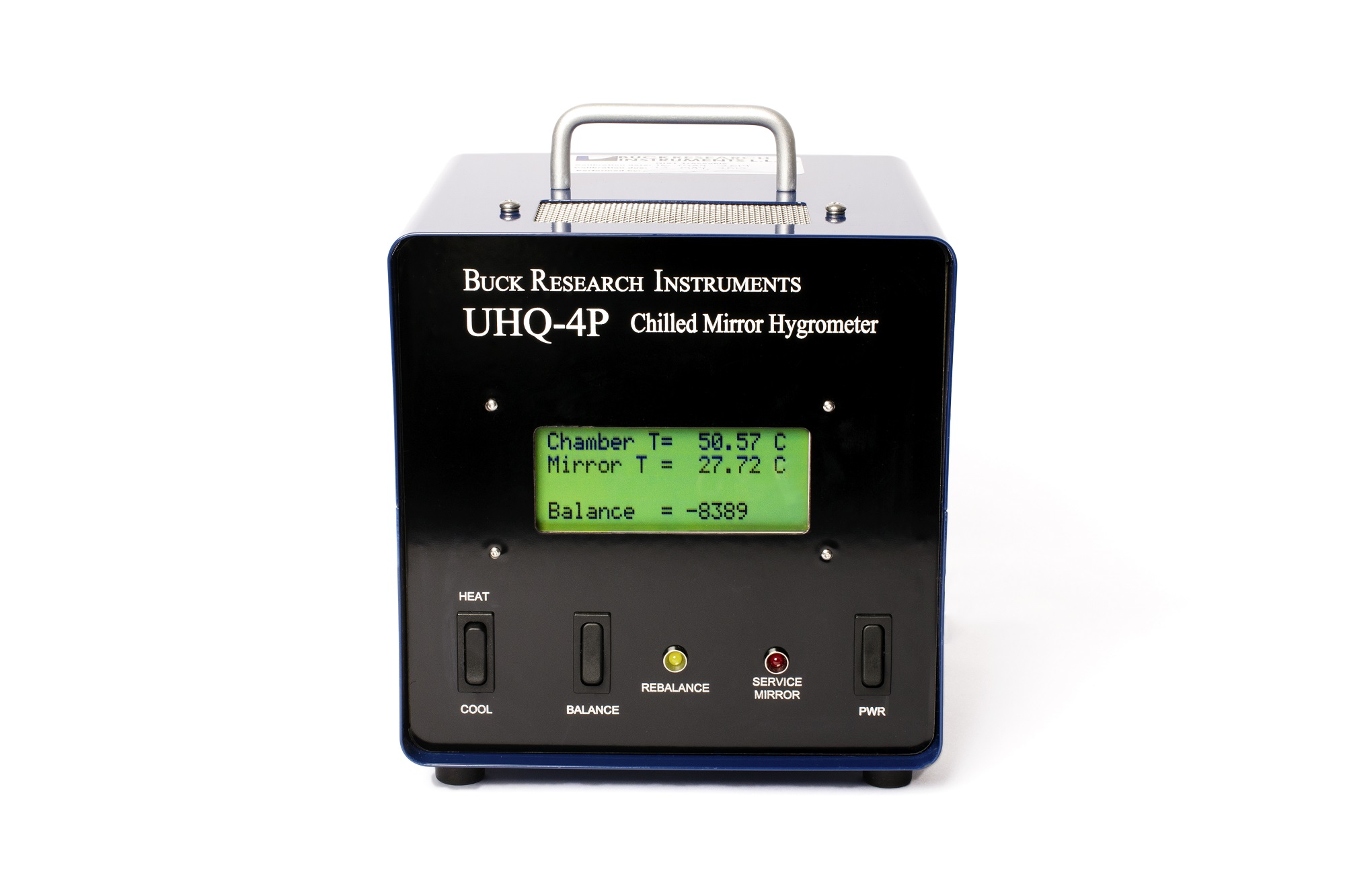
Chilled Mirror Hygrometers
Chilled mirror hygrometers are often utilized in sensitive scientific research to identify the slightest traces of moisture. Hygrometers based on chilled mirrors include dew-point and frost-point hygrometers, measuring trace moisture as little as one part per billion. In a gas, the dew-point hygrometer measures the saturation point of water vapor. The surface of the mirror is chilled until dew droplets form, making reflected light scatter and halting the cooling procedure.
The water appears as frost when the temperature is below 0°. Hygrometers measuring frost points can track climate change and measure the distribution of water vapor around the world.
Chilled mirror hygrometers utilize different cooling methods, including dry ice, compressed carbon dioxide, mechanical refrigeration, and liquid air to chill mirror surfaces until the gas, temperature, and pressure reach maximum saturation, making droplets condense on the mirror. These mirrors never require calibration and operate in situations where routine calibration is impractical.
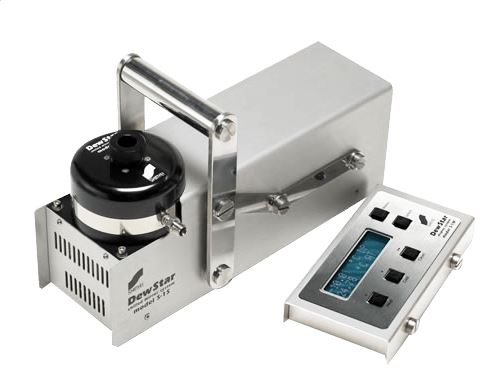
What Factors Should I Consider When Choosing a Hygrometer?
If you are selecting a hygrometer, check the scale of the thermometer to find out whether it reads in Fahrenheit or Celsius. A variety of digital hygrometers can handle multiple tasks. In humidors and musical instrument cases, special hygrometers are needed.
Download Types of Hygrometers PDF
The PDF version of this document is available for download to your computer if you prefer. To download, please click on the link below.
Buy Equipment or Ask for a Service
By using Linquip RFQ Service, you can expect to receive quotations from various suppliers across multiple industries and regions.
Click Here to Request a Quotation From Suppliers and Service Providers
Read More In Linquip
- Instrument Used to Measure Humidity: Classical and Modern Hygrometers
- 10 Types of CNC Machine + Applications & PDF
- All Types of Pneumatic Fittings: Specifications and Applications
- What is Polarized Capacitor? Function and Applications
- A Useful Guide to Different Types of Inductors
- What is Film Capacitor? Different Types & Working
- What are the Different Types of Actuators?
- 7 Different Multimeter Parts and Components: All You Need to Know about All the Components
- 13 Types of Tachometers With Their Functions & Advantages

